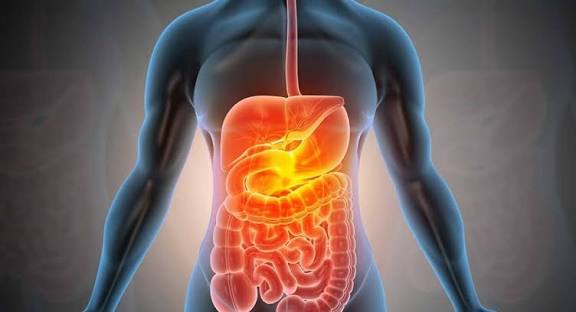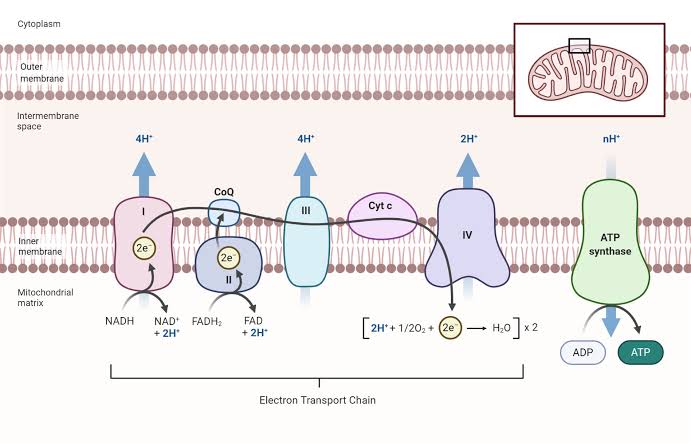
Structure of Globular Proteins
Globular proteins are characterized by their spherical or globe-like shape, which is primarily determined by their complex folding patterns. The structure of globular proteins can be understood through four distinct levels: primary, secondary, tertiary, and quaternary structures.
Primary Structure
The primary structure of a globular protein refers to the linear sequence of amino acids that make up the polypeptide chain. This sequence is held together by peptide bonds formed between the amino group of one amino acid and the carboxyl group of another. The specific order of these amino acids is crucial as it dictates how the protein will fold into its functional form.
Secondary Structure
The secondary structure involves local folding patterns within the polypeptide chain, primarily stabilized by hydrogen bonds. There are two common types of secondary structures in globular proteins:
- Alpha Helix: A coiled structure where each turn of the helix is stabilized by hydrogen bonds between every fourth amino acid.
- Beta Pleated Sheet: A sheet-like arrangement formed when segments of the polypeptide chain lie parallel or antiparallel to each other, connected by hydrogen bonds.
These secondary structures contribute to the overall stability and shape of the protein.
Tertiary Structure
The tertiary structure represents the overall three-dimensional shape of a single polypeptide chain. This level of structure arises from interactions among various R groups (side chains) of the amino acids. Key interactions that stabilize tertiary structure include:
- Hydrophobic Interactions: Non-polar side chains tend to cluster away from water, driving them towards the interior.
- Hydrogen Bonds: Formed between polar side chains.
- Ionic Bonds: Occur between positively and negatively charged side chains.
- Disulfide Bridges: Covalent bonds formed between cysteine residues that help stabilize the protein’s shape.
This intricate folding results in a compact, functional form that is essential for biological activity.
Quaternary Structure
Some globular proteins consist of multiple polypeptide chains (subunits) that come together to form a larger functional complex. The quaternary structure describes how these subunits interact and arrange themselves. Stabilizing forces in quaternary structures include hydrogen bonds, ionic interactions, hydrophobic interactions, and disulfide bridges. Hemoglobin is a classic example of a globular protein with quaternary structure, consisting of four subunits that work together to transport oxygen in blood.
In summary, globular proteins exhibit a highly organized and compact structure due to their unique folding patterns across different structural levels. Their ability to maintain solubility in aqueous environments while performing diverse biological functions makes them essential components in various physiological processes.
Functions of Globular Proteins
Globular proteins are a diverse group of proteins characterized by their roughly spherical shape and water solubility. They play a multitude of essential roles in biological systems, which can be categorized into several main functions:
1. Enzymatic Activity
Globular proteins often function as enzymes, which are biological catalysts that accelerate chemical reactions within organisms. They do this under mild conditions and with high specificity. For example, esterases are globular proteins that catalyze the hydrolysis of esters into acids and alcohols, facilitating various metabolic processes.
2. Signaling and Regulatory Functions
Many globular proteins act as messengers in the body, transmitting signals to regulate biological processes. Hormones such as insulin are classic examples; they help control glucose levels in the blood by signaling cells to uptake glucose or store it as glycogen.
3. Transport Mechanisms
Globular proteins also serve as transporters for other molecules across cellular membranes. Hemoglobin, for instance, is a globular protein responsible for transporting oxygen from the lungs to tissues throughout the body and returning carbon dioxide from tissues back to the lungs.
4. Storage of Amino Acids
Some globular proteins function as reservoirs for amino acids, which can be mobilized when needed for protein synthesis or energy production. This storage role is crucial during periods of fasting or increased metabolic demand.
5. Structural Roles
While fibrous proteins primarily provide structural support, some globular proteins also contribute to structural integrity at a molecular level. For example, actin and tubulin are globular proteins that polymerize to form long filaments (microfilaments and microtubules) essential for cell shape and movement.
6. Immune Response
Globular proteins include antibodies (immunoglobulins), which play a critical role in the immune system by recognizing and binding to foreign antigens (such as bacteria and viruses) to neutralize them or mark them for destruction by other immune cells.
7. Regulation of Biological Processes
Globular proteins can also have regulatory functions beyond enzymatic activity; they may influence gene expression or signal transduction pathways that control various physiological responses.
In summary, globular proteins are multifunctional biomolecules that serve critical roles in enzymatic reactions, signaling pathways, transport mechanisms, storage functions, structural integrity, immune response, and regulation of biological processes, making them vital components of living organisms.
Examples of Globular Proteins
Globular proteins are essential macromolecules that perform a variety of functions in biological systems. Here are some notable examples, along with explanations of their roles and characteristics:
1. Hemoglobin
Hemoglobin is a globular protein found in red blood cells, responsible for transporting oxygen from the lungs to tissues throughout the body and returning carbon dioxide from the tissues back to the lungs. It consists of four polypeptide chains (two alpha and two beta chains) that form a quaternary structure. Each chain contains a heme group that binds oxygen. The solubility and spherical shape of hemoglobin allow it to efficiently carry oxygen in the aqueous environment of blood.
2. Enzymes (e.g., Lactase)
Lactase is an enzyme that catalyzes the hydrolysis of lactose into glucose and galactose. As a globular protein, lactase has a specific three-dimensional structure that allows it to bind lactose effectively at its active site, facilitating the chemical reaction. Enzymes like lactase are crucial for metabolic processes, and their globular nature contributes to their solubility in cellular fluids.
3. Immunoglobulins (Antibodies)
Immunoglobulins, or antibodies, are globular proteins produced by B cells as part of the immune response. They recognize and bind to specific antigens (foreign substances) such as bacteria and viruses, marking them for destruction by other immune cells. Immunoglobulins have a Y-shaped structure composed of heavy and light chains, allowing them to interact specifically with antigens while remaining soluble in bodily fluids.
4. Albumin
Albumin is a major plasma protein synthesized in the liver, playing key roles in maintaining osmotic pressure and transporting various substances such as hormones, vitamins, and drugs throughout the bloodstream. It is highly soluble in water due to its globular structure, which features hydrophilic amino acids on its surface that interact favorably with water molecules.
5. Myoglobin
Myoglobin is a globular protein found primarily in muscle tissue, where it serves as an oxygen storage molecule. Similar to hemoglobin but consisting of only one polypeptide chain with one heme group, myoglobin binds oxygen more tightly than hemoglobin, making it crucial for providing oxygen during periods of intense muscular activity.
6. Protein Kinases
Protein kinases are enzymes that modify other proteins by adding phosphate groups through phosphorylation—a critical process for regulating cellular activities such as metabolism, cell division, and apoptosis (programmed cell death). These enzymes exhibit a globular structure that enables them to interact with various substrates effectively.
7. Ferritin
Ferritin is a globular protein complex responsible for storing iron within cells and releasing it when needed. Its spherical shape allows it to encapsulate iron ions safely while maintaining solubility in aqueous environments. Ferritin plays an essential role in iron homeostasis within organisms.
In summary, globular proteins encompass a wide range of functional roles including transport (hemoglobin), enzymatic activity (lactase), immune response (immunoglobulins), storage (myoglobin), regulation (protein kinases), and nutrient transport (albumin). Their unique structures contribute significantly to their solubility and functionality within biological systems.
Clinical Implications of Errors in Synthesis/Folding of Globular Proteins
Errors in the synthesis and folding of globular proteins can have significant clinical implications, impacting various diseases and conditions. Understanding these implications requires a detailed examination of how errors occur, their consequences on protein function, and the resulting pathophysiological effects.
1. Nature of Errors in Protein Synthesis and Folding
Globular proteins are essential for numerous biological functions, including enzymatic activity, signaling, and structural roles. Errors during their synthesis can arise from several sources:
- Amino Acid Misincorporation: This occurs during translation when incorrect amino acids are incorporated into the growing polypeptide chain. Estimates suggest that such misincorporations happen at rates of 1 in every 1,000 to 10,000 codons translated.
- Transcription Errors: Mistakes during transcription can lead to faulty mRNA, which subsequently results in incorrect protein synthesis.
- Folding Errors: Even correctly synthesized polypeptides may fail to fold properly due to intrinsic properties or external stressors (e.g., oxidative stress). Misfolded proteins can aggregate or remain non-functional.
2. Consequences of Protein Misfolding
The consequences of errors in globular protein synthesis and folding are profound:
- Loss of Function: Misfolded proteins often lose their functional capabilities. For example, enzymes may become inactive due to improper folding that disrupts their active sites.
- Protein Aggregation: Misfolded proteins can aggregate into toxic forms. This aggregation is a hallmark of several neurodegenerative diseases such as Alzheimer’s disease (AD) and Parkinson’s disease (PD), where proteins like amyloid-beta and α-synuclein accumulate.
- Cellular Stress Responses: Accumulation of misfolded proteins triggers cellular stress responses such as the Unfolded Protein Response (UPR). While UPR aims to restore normal function by enhancing protein folding capacity or degrading misfolded proteins, chronic activation can lead to cell death.
3. Disease Associations
Several diseases are directly linked to errors in globular protein synthesis and folding:
- Neurodegenerative Diseases: Conditions like AD and PD involve the aggregation of misfolded proteins leading to neuronal damage. In AD, amyloid plaques formed from misfolded amyloid-beta peptides disrupt cell function and trigger inflammation.
- Cystic Fibrosis: Caused by mutations in the CFTR gene leading to improper folding of the CFTR protein. The misfolding prevents its transport to the cell surface, resulting in severe respiratory issues.
- Hemophilia A: This condition arises from mutations affecting clotting factor VIII synthesis. Incorrectly folded or synthesized factor VIII cannot function properly in blood coagulation pathways.
4. Therapeutic Implications
Understanding these errors opens avenues for therapeutic interventions:
- Chaperone Therapy: Enhancing the activity of molecular chaperones (like BiP/GRP78) that assist with proper protein folding could mitigate some effects of misfolding.
- Chemical Chaperones: Compounds that stabilize protein structure may help prevent aggregation or promote correct folding.
- Gene Therapy: Correcting genetic mutations at the source could restore normal protein synthesis pathways for conditions like cystic fibrosis or hemophilia A.
In summary, errors in the synthesis and folding of globular proteins have critical clinical implications ranging from loss of function to severe diseases characterized by protein aggregation. Addressing these errors through various therapeutic strategies holds promise for improving patient outcomes across multiple conditions.







